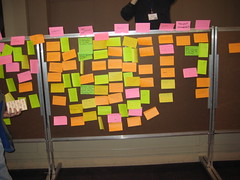
Yesterday we looked at what needs to be in place before you start writing your procedures. This involves getting the funding, creating a project plan, needs assessment and/or scope of work depending on how complexity of the assignment. Once you have the budget, the next stage is to get support from Management and to find someone at an executive level who will Champion the project.
Why You Need Management Support
Before you start the SOP development process, you need to ensure that you have some level of support from the Management team. Unless there is a commitment from the management layer, your team will have a hard time of it especially when they need to make demands on other co-workers’ time.
What you’re looking for is:
- Budget and financial support to get the necessary human resources (e.g. technical writers) and technical resources (new licenses for MS Visio or other diagramming software)
- Commitment from the board that this activity will be championed and the necessary support will be provided to drive the project.
- Communications from the Management team to inform, update, cajole and direct its staff. Unless other departments highlight the importance of this activity, your team can be seen as an interruption into other’s schedule. To avoid this, work with the Management team and show there how this project benefits their Department. Also, you may need to ‘script’ some guidelines for these Departments to get the ball rolling.
While many colleagues may be willing to help, they may struggle to explain your goals to their colleagues and team members. For example, what your long-term goals are and how these relates to the company’s success.
Otherwise, you’re just writing a bunch of documents, right?
How do I get support from Management?
There are several ways to do this.
- Emotional triggers – find ways to demonstrate that the SOPs work will improve the company, not from a financial perspective, but ways that will boost morale, increase employee satisfaction or provide some benefit to customers. Once you have found ways to hit the hot buttons, then getting the funding may not be so hard. The Heather Brothers book Switch gives some good examples of how to do this.
- Demonstrate the benefits – after you’ve warmed them up and generated interest in the project, show them how and where the company will benefit with charts, diagrams and other materials that will appeal to the more logical part of their brains. Process flow diagrams are an excellent way to visualize how a business scenario works.
It’s all about winning hearts and minds!
Finding An Executive Champion
Many companies dedicate a high-level executive to ‘champion’ the SOP process. This ensures that the project is given the attention it deserves and that line managers give the procedure writers access to their staff when necessary.
While not every company will have an obvious champion, see if there is someone you can ‘butter up’ and help get the project started. See who would benefit most if there were accurate processes in place. Show them the cost savings, faster turnarounds, and other pain points that could be reduced.
But, I don’t know how to get started
If you are new to procedure writing, then it’s hard to know where to start. There seems to be some many tasks that need attention. Well, the first thing to do is talk to those who currently use the process. This is also called the As-Is process. In other words, this is how the process works – warts and all – right now.
One of the barriers that procedure writers face is getting ‘face-time’ with those who understand how the procedure works and those who helped define the current as-is process. Sometimes they may have left the company and then you have to dig around as best you can.
If the original people are still there, try to contact them in person. Dont email them or leave a voicemail. Walk over to where they work and introduce yourself.
“Sorry, I’m too busy.”
You’ll hear this a lot. It’s understandable. They are already under pressure from other projects and don’t need another to-do added to their list.
Remember the Champion?
See if you can get the Champion to drop over and give them five minutes. If you can show the SME that they’re not doing this for you but for someone much higher up the food chain, they may be more willing to help.
Also, the Champion will ‘bend the arm’ of those who are holding up the project or slow to review the material, ensuring that the project is delivered on time.
As you can see, if you don’t have an executive sponsor, your team are likely to suffer at the hands of unhelpful colleagues. It can be very demoralizing for the procedure team to chase SMEs who drag their heels when reviewing the documents. This is likely to lead to the project missing its targets and running over budget.
Next Steps
Once you have backing from an executive level is becomes much easier to drive the project forward. The endorsement of a senior figure gives your team that clout to open doors and ‘encourage’ others to attend meetings.
Mentioning that the status reports go all the way to executive level is usually enough to motivate folks to attend workshops or give time to your team.
Tomorrow we will look at how to start putting your team together. We will also outline the skillsets they need and the type of non-writing activities involved in procedure writing.
Confused? It will all make sense tomorrow. See you then






